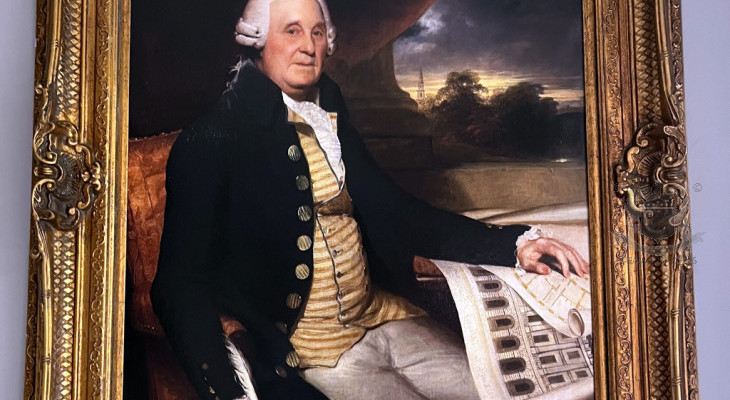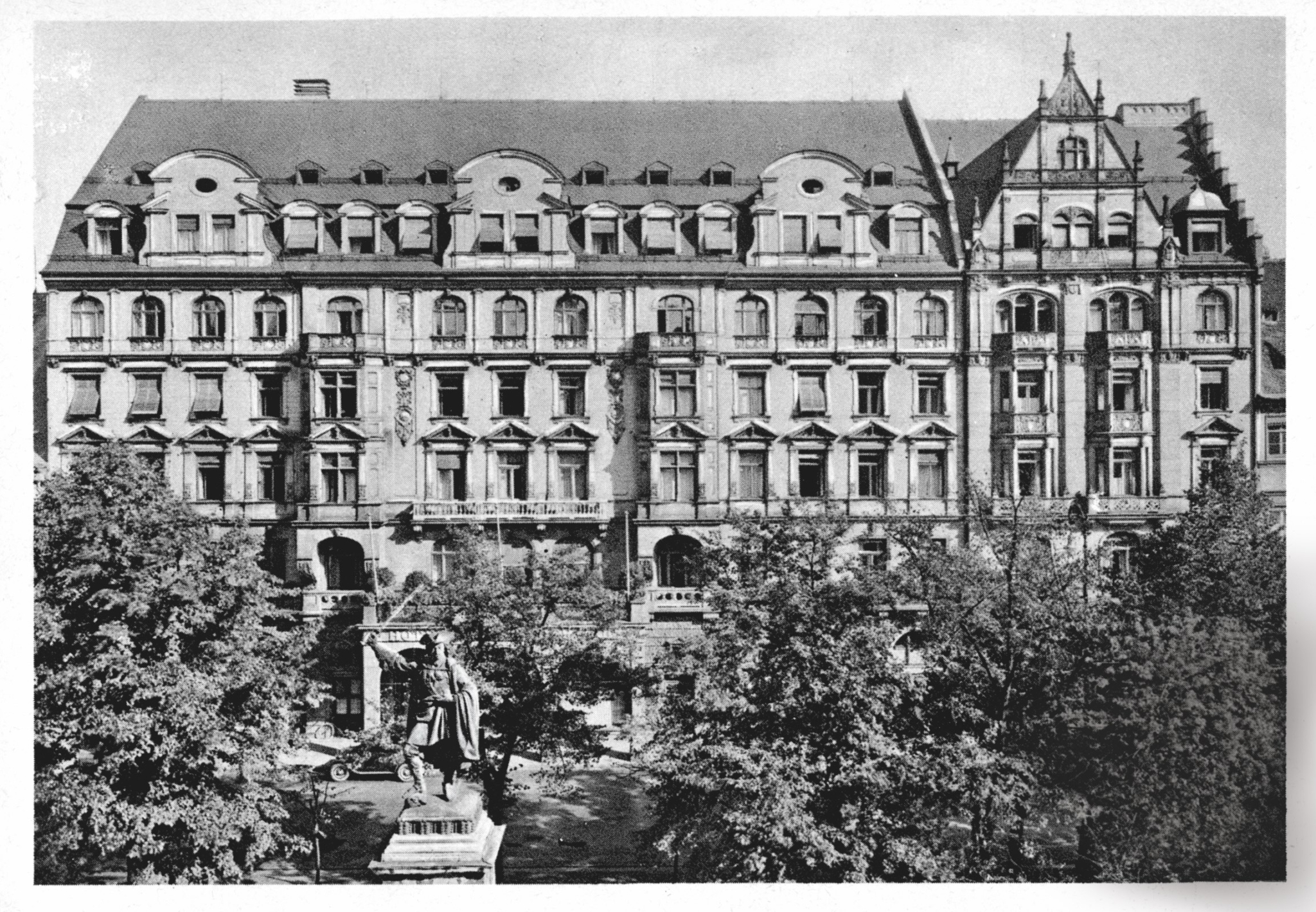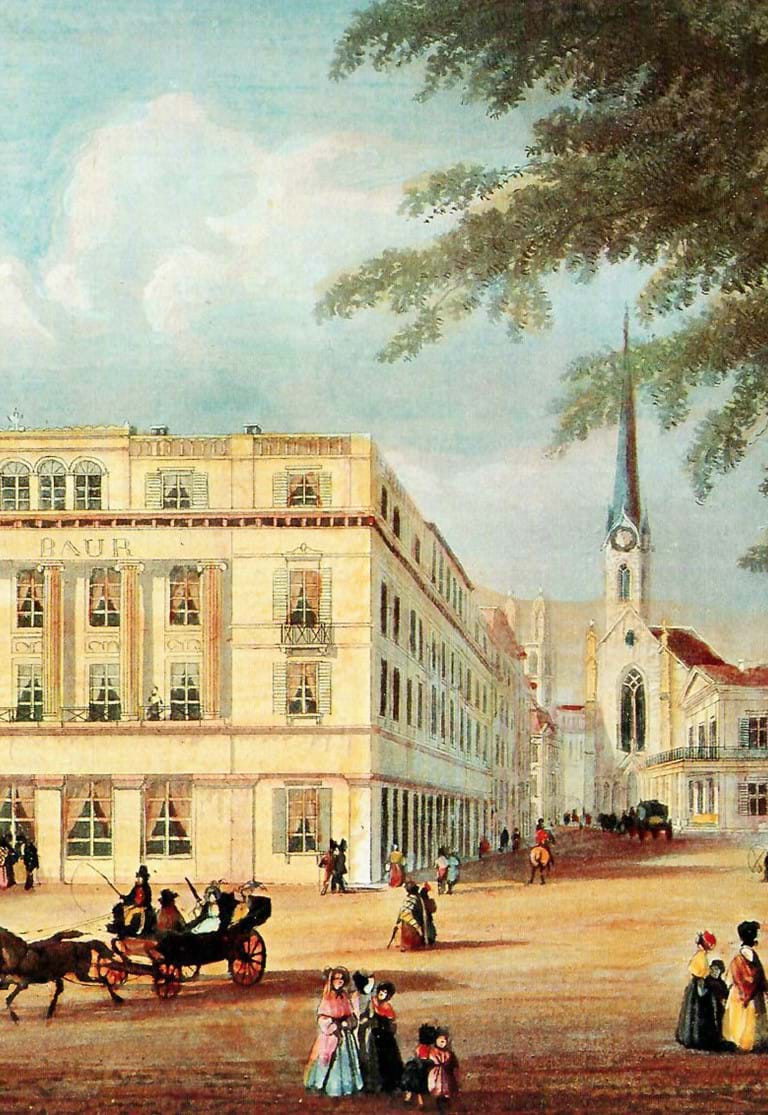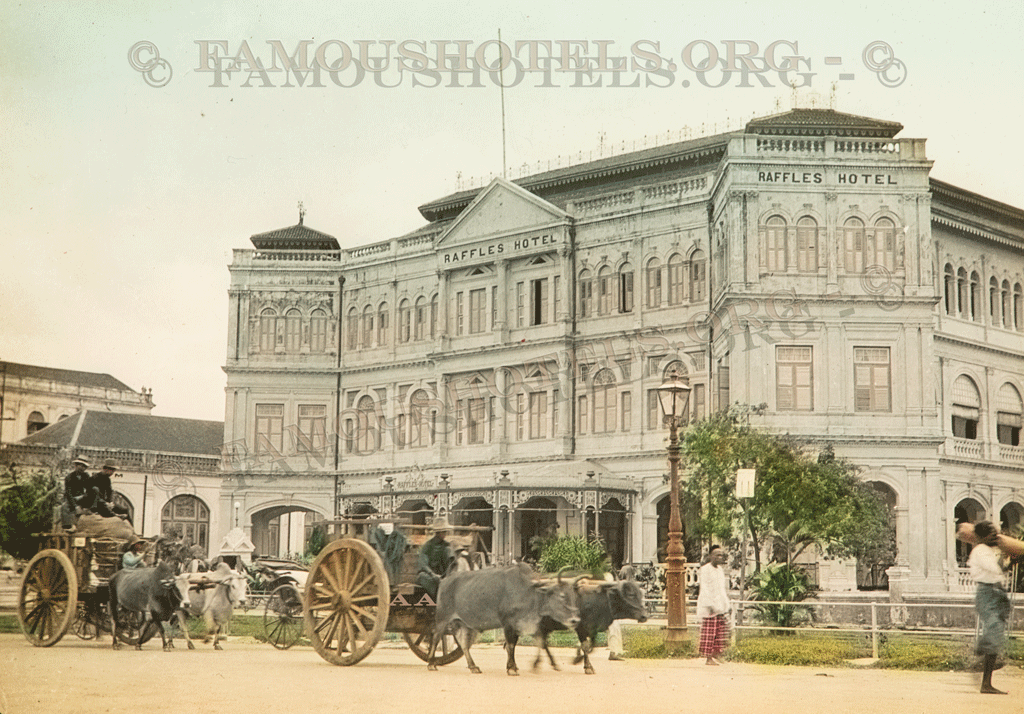Britains Oldest Hotel
( words)
Above: John Carr of York with the drawings of the hotel
By Adrian Mourby
The oldest purpose-built hotel in Britain is generally agreed to be The Royal Clarence in Exeter.
Opened in 1770, it burned down in 2016 and is currently still being rebuilt. This moves (10 years younger) The Crescent at Buxton way up the list of hotels vying for the honour of being Britain’s most senior. There are many older buildings in Britain that operate as hotels today but none of them were built to serve that purpose originally. Not like the Crescent.
It was in 1780 that the 5th Duke of Devonshire commissioned a hotel to be built on a plot of land he had purchased opposite the ancient well of St Ann in Buxton. William Cavendish reckoned one of these new French-style "hotels" could exploit the famously efficacious thermal springs. The Romans had opened up the waters of Aquae Arnemetiae (Buxton) for bathing during their occupation of Britain. Indeed St Ann’s Well proved such a place of health and devotion that Henry VIII's chancellor, Thomas Cromwell shut the shrine down when dissolving the English abbeys for his master during the Reformation.
A new hotel with all Georgian amenities might prove a money-spinner, thought the Duke, in the same way that Bath had made fortunes in the south west of England
However a popular story runs that the 5th Duke had an ulterior motive. His wife, the fabulous Georgiana (played by Keira Knightly in the film The Duchess) was forever disappearing off to London and Bath for the delights of the "season" - and running up huge gambling debts thereby. So His Grace decided to bring some of the charm of both cities to Derbyshire where his family seat was based at the palatial -but rather isolated- Chatsworth House.
In due course the celebrated architect, John Carr of York was dispatched to Bath to study its Royal Crescent. This, still one of the most famous buildings in Britain had been designed by John Wood Jnr as a unified sweep of 30 facades behind which builders could create individual townhouses. In Buxton Carr created only eight "houses" but his design incorporated a uniform crescent with a thermal bath at one end and assembly rooms at the other. This was Bath in miniature, brought to the chilly Peak District. Known variously as St Ann's Hotel and The Great Hotel, what is now The Ensana Crescent Hotel created the basis of Regency tourism in Buxton. Other, lesser hotels sprang up nearby and the Duke also created a positively luxurious stable for 120 horses on the slopes behind his new hotel. This still stands and is now part of the University of Derby of which the Cavendish dukes are hereditary chancellors.
Carr's perfect stone terrace cost £38,000 to complete. That was a huge amount of money in the 1780s. The headstrong Georgiana, on visiting the building site in 1783 wrote to her mother "I never saw anything so magnificent as the Crescent though it must half ruin me - my spirit makes me delight in the Duke doing it."
Fortunately William Cavendish, the 5th Duke was making that much money annually just from his copper mines in Staffordshire. The Royal Navy had recently taken to copper-bottoming their ships as the metal protected hulls and allowed British warships to sail faster. As a result copper had rocketed in price.
Once opened, The Crescent became the flagship of Buxton tourism throughout the nineteenth century. It can be argued that at a third of the width of Bath's Royal Crescent it is actually more pleasing to the eye. Certainly it is difficult to get a good view of Wood's Crescent unless one is floating over it in a hot air balloon - it is just too big - whereas Carr's Crescent is clearly a work of beauty on a more human scale, obvious to anyone walking their dog at 7am or stumbling back late into reception after a performance at the nearby opera house.
Sadly by the end of the twentieth century parts of this superb building lay derelict while others had been repurposed into council offices. The sublime assembly room -whose painted ceiling outshone anything offered in John Wood's Bath- had been turned into the to the town's borrowing library. It took a major 21st century undertaking to revive The Crescent with investment from two local councils, input from the National Lottery Heritage Fund, Historic England and the Ensana Group who run many spas in Europe. The refurbishment cost was over £67 million of which two million alone went into the removal of pigeons and other vermin from the decaying structure.
Today the result is hugely impressive, but discreetly so. The eight doors that originally let into Crow's terrace of eight hotel lodging houses have been retained (making it difficult to find the front door of the modern hotel which has no obvious signage, as would also have been the case in 1789) and every shade of paint - a lot of grey, mushroom and maroon - is strictly drawn from what would have been available in England in the 1780s. There are even eight original staircases -rather than one main flight leading off reception - reflecting the original plans for multiple occupation.
The newly revamped Ensana Crescent Hotel re-opened in 2020 for just 34 days before Covid lockdowns in Britain shut it again. Post-pandemic, it has thrived with guests coming from across the north of England - Lancashire, Yorkshire as well as the Peak District - and from the south of England too. Crow's original thermal pool at the west end of the terrace has been restored with the very same iron canopy that the Victorians added, now beautifully glazed over in blue stained glass. And the water is still warm. It arrives in the spa 5,000 years after raining down on Derbyshire, and having been boiling away miles below Buxton for millennia before reaching the town today . However, because the water is untreated the pool has to be drained every night and its tiles scrubbed clean before it can be refilled. It's a process that takes eight hours before this very special thermal pool can reopen at 8.30 the next day.
Nowadays the Assembly Rooms at the east end of The Crescent are let out for functions. Here there is a huge, circular, floating staircase that leads up past portraits of Duchess Georgiana and the 5th Duke as well as John Carr, architect. After them the splendour of the former public library is unveiled. It's a lofty room with an exquisite ceiling in pale pink, blue and yellow. James Turner, the Operations Manager claims that he only has to get a Buxton bride and groom to see this room to guarantee its booking.
Today, just as in 1789 the curve of the hotel's gracious crescent stands opposite St Ann's Well which was given a 19th century makeover and now serves as a visitor centre. And next to it is a small fountain flowing with Buxton mineral water from the Roman spring. Although this water is bottled these days by the Nestlé company and sold worldwide it is also freely available to the people of Derbyshire who drive up with huge plastic flagons to fill up for the week.
There is no doubt that it was the 5th Duke's Terrace Hotel that put Buxton on the fashionable English map when it opened in 1789 and no doubt that its restoration keeps Buxton on the tourist map over 230 years later.






